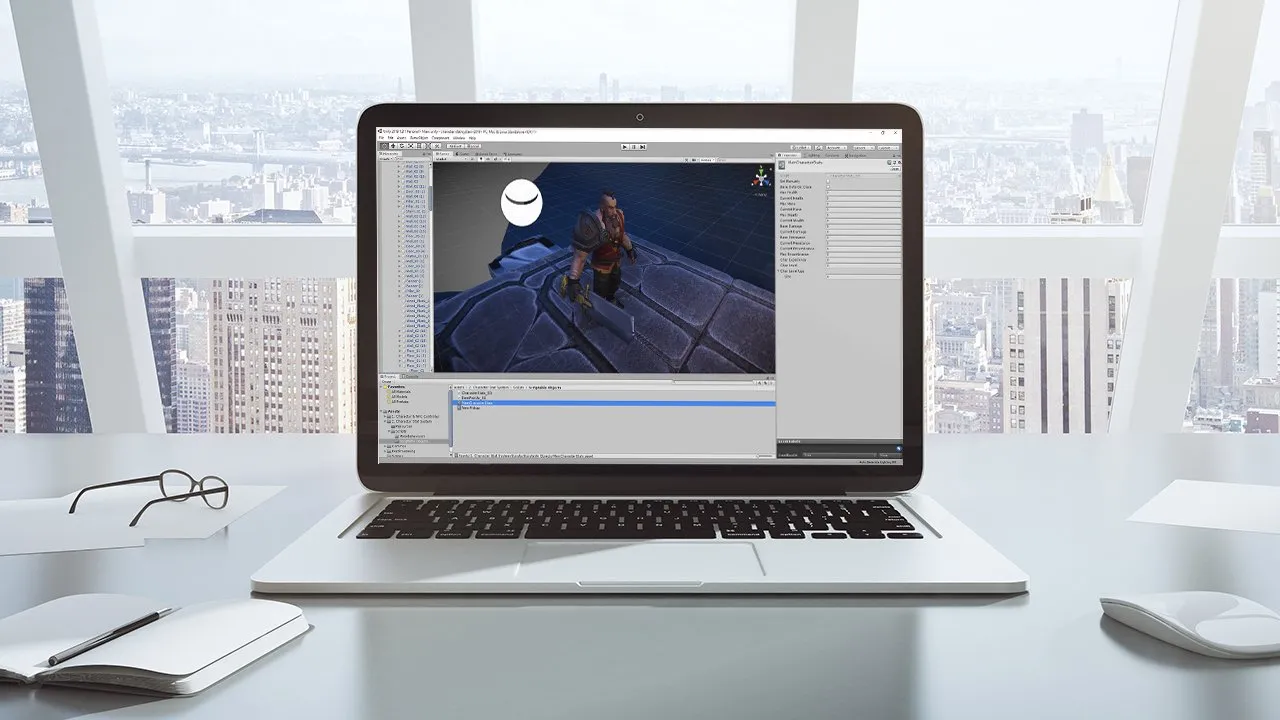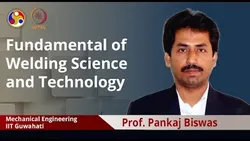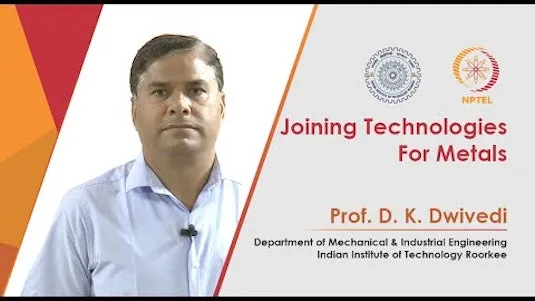
Welding Engineering 
This Welding Engineering course is a 40 video lecture series that covers the manufacturing and joining techniques. It will discuss the need for welding, selection of a joint, comparison of welding with other manufacturing processes, selection of a welding process, advantages and limitations of welding, and application of welding in different sectors. This course is perfect for those looking to gain skill training in welding. ▼
ADVERTISEMENT
Course Feature
![]() Cost:
Cost:
Free
![]() Provider:
Provider:
Youtube
![]() Certificate:
Certificate:
Paid Certification
![]() Language:
Language:
English
![]() Start Date:
Start Date:
On-Demand
Course Overview
❗The content presented here is sourced directly from Youtube platform. For comprehensive course details, including enrollment information, simply click on the 'Go to class' link on our website.
Updated in [May 25th, 2023]
Welding Engineering is a 40 video lecture series that covers the manufacturing and joining techniques. The course begins with a discussion of the need for welding and selection of a joint. It then moves on to compare welding with other manufacturing processes, selection of a welding process, advantages and limitations of welding, and application of welding in different sectors.
[Applications]
After completing this course, students will have a better understanding of welding engineering and its applications. They will be able to select the appropriate welding process for a given application, understand the advantages and limitations of welding, and be able to compare welding with other manufacturing processes. Additionally, they will be able to apply welding in different sectors.
[Career Paths]
Welding Engineering is a growing field with many job opportunities. Here are three job positions paths and their developing trends:
1. Welding Engineer: Welding Engineers are responsible for designing and developing welding processes and procedures. They must have a strong understanding of welding techniques and materials, as well as the ability to troubleshoot welding problems. As the demand for welding increases, the need for Welding Engineers is expected to grow.
2. Welding Inspector: Welding Inspectors are responsible for ensuring that welds meet safety and quality standards. They must have a strong understanding of welding techniques and materials, as well as the ability to inspect welds for defects. As the demand for welding increases, the need for Welding Inspectors is expected to grow.
3. Welding Technician: Welding Technicians are responsible for performing welding operations. They must have a strong understanding of welding techniques and materials, as well as the ability to operate welding equipment. As the demand for welding increases, the need for Welding Technicians is expected to grow.
4. Welding Educator: Welding Educators are responsible for teaching welding techniques and materials. They must have a strong understanding of welding techniques and materials, as well as the ability to teach welding to students. As the demand for welding increases, the need for Welding Educators is expected to grow.
[Education Paths]
Welding engineering is a field of engineering that focuses on the design, fabrication, and inspection of welded structures and components. It is a specialized field of engineering that requires a thorough understanding of the principles of metallurgy, welding processes, and welding technology. Welding engineers are responsible for the design and implementation of welding processes, as well as the development of new welding techniques and technologies. They are also responsible for the inspection and testing of welded components and structures. The field of welding engineering is rapidly evolving, with new technologies and processes being developed to improve the quality and efficiency of welding operations.
[Degree Paths]
1. Bachelor of Science in Welding Engineering: This degree program provides students with a comprehensive understanding of welding processes, materials, and technologies. Students will learn about the principles of metallurgy, welding processes, and welding technology, as well as the design and implementation of welding processes. This degree program also covers the inspection and testing of welded components and structures.
2. Master of Science in Welding Engineering: This degree program provides students with an advanced understanding of welding processes, materials, and technologies. Students will learn about the principles of metallurgy, welding processes, and welding technology, as well as the design and implementation of welding processes. This degree program also covers the inspection and testing of welded components and structures.
3. Doctor of Philosophy in Welding Engineering: This degree program provides students with an in-depth understanding of welding processes, materials, and technologies. Students will learn about the principles of metallurgy, welding processes, and welding technology, as well as the design and implementation of welding processes. This degree program also covers the inspection and testing of welded components and structures.
[Developing Trends]
1. Automation: Automation is becoming increasingly important in welding engineering, as it allows for faster and more efficient welding processes. Automation also allows for more precise and consistent welds, which can improve the quality of welded components and structures.
2. Robotics: Robotics is becoming increasingly important in welding engineering, as it allows for faster and more efficient welding processes. Robotics also allows for more precise and consistent welds, which can improve the quality of welded components and structures.
3. 3D Printing: 3D printing is becoming increasingly important in welding engineering, as it allows for faster and more efficient welding processes. 3D printing also allows for more precise and consistent welds, which can improve the quality of welded components and structures.
4. Virtual Reality: Virtual reality is becoming increasingly important in welding engineering, as it allows for faster and more efficient welding processes. Virtual reality also allows for more precise and consistent welds, which can improve the quality of welded components and structures.
Course Provider

Provider Youtube's Stats at AZClass
Discussion and Reviews
0.0 (Based on 0 reviews)
Explore Similar Online Courses

Neural Networks

Creating a Character Stat System in Unity

Python for Informatics: Exploring Information

Social Network Analysis

Introduction to Systematic Review and Meta-Analysis

The Analytics Edge

DCO042 - Python For Informatics

Causal Diagrams: Draw Your Assumptions Before Your Conclusions

Whole genome sequencing of bacterial genomes - tools and applications

Welding Safety

Fundamental of Welding Science and Technology


Start your review of Welding Engineering